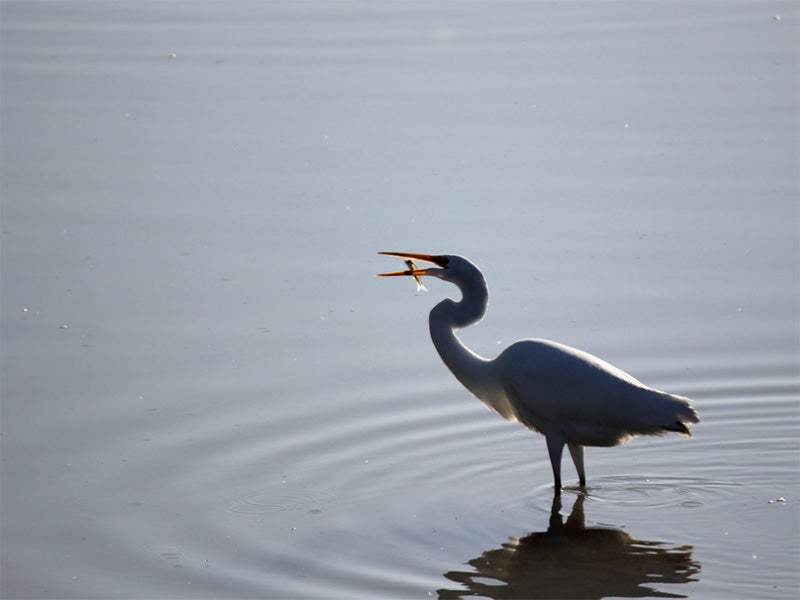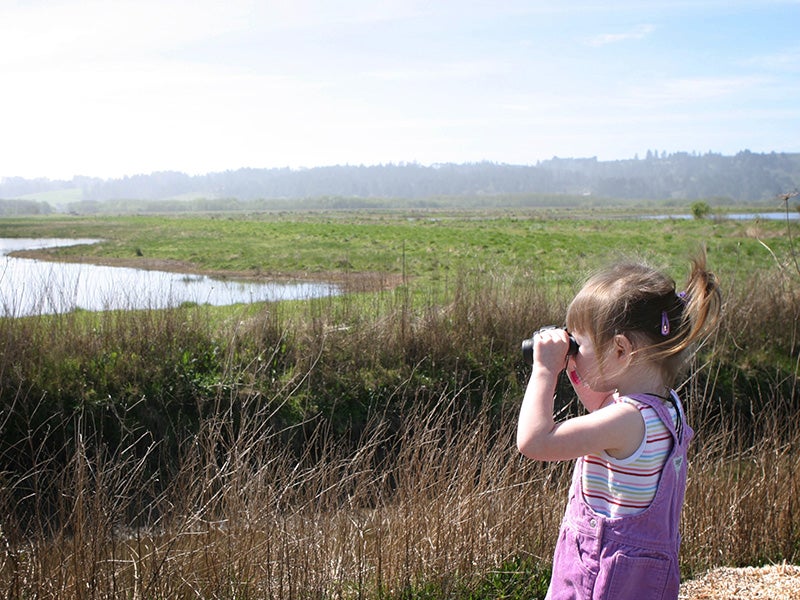Halting Humboldt Bay Bird Habitat Destruction
The unprecedented expansion in Humboldt Bay—which would increase the state’s aquaculture acreage by 34%—would cause irreparable damage to eelgrass beds and mudflats that migratory birds such as Brant and Western Sandpiper need to survive. Humboldt Bay is a vital stop for birds along the Pacific Flyway. In spring migration alone, Humboldt Bay hosts as many as 100,000 shorebirds each day.
Regional Office / Program
Case Overview
In an effort to protect one of the most important places for migratory birds on the Pacific Coast, conservation and hunting groups have filed suit to stop a large expansion of oyster farming in Humboldt Bay that will dramatically increase the footprint of existing oyster operations. This unprecedented expansion in Humboldt Bay—which would increase the state’s aquaculture acreage by 34 percent—would cause irreparable damage to eelgrass beds and mudflats that migratory birds such as Brant and Western Sandpiper need to survive.
The lawsuit against the Humboldt Bay Harbor District, filed in the California Superior Court in Humboldt County by Earthjustice on behalf of Audubon California and California Waterfowl Association, targets the faulty environmental impact studies that formed the basis for the district’s February 2017 approval of the expansion of Coast Seafood’s current operations in the bay.
Humboldt Bay is a vital stop for birds along the Pacific Flyway. In spring migration alone, Humboldt Bay hosts as many as 100,000 shorebirds each day. It hosts extraordinarily large percentages of many populations of shorebirds and waterfowl, including approximately:
- Up to 60% of all migrating Black Brant
- 23% of all migrating and overwintering Western Sandpiper
- 44% of all migrating and overwintering Dunlin (Pacifica subspecies)
A key driver of this bird activity is Humboldt Bay’s eelgrass, a rare type of habitat that is invaluable as a food resource for birds, as well as the fish and crustaceans that birds eat. Eelgrass is on the decline in much of California, and about half of the state’s remaining eelgrass is in Humboldt Bay. Eelgrass is also vital to the bay’s herring population, which will lose spawning ground to this project.
In addition to degrading hundreds of acres of eelgrass habitat, the project would increase the footprint of aquaculture in the northern portion of Humboldt Bay by 61 percent, effectively blocking that area from use by wildlife, fish and people. For example, herring avoid spawning on aquaculture gear, Brant and other birds avoid foraging in and near the gear, and hunters, paddlers, and other recreational users cannot safely navigate in or around it.
Coastal mudflats support the highest densities of shorebirds in California. Many of these shorebirds that use these habitats—such as Long-billed Curlew, Western Sandpiper and Dunlin—are in decline. This type of oyster farming can exclude many shorebirds from feeding and resting during the critical migratory and wintering stages.
The lawsuit takes specific aim at the environmental impact report approved by the Harbor District Commission in February 2017. This report failed to analyze and disclose the significant, harmful impacts of the project on the eelgrass and other habitat in the bay, and the cumulative effects on numerous migratory species that depend on that habitat along the entire West Coast and out into the Pacific Ocean. It also failed to properly account for the increased disturbance that the proposed expansion would have on sensitive bird and fish species, as well as the effects on herring spawning in the bay.

Case Updates
Case page created on March 30, 2017.
